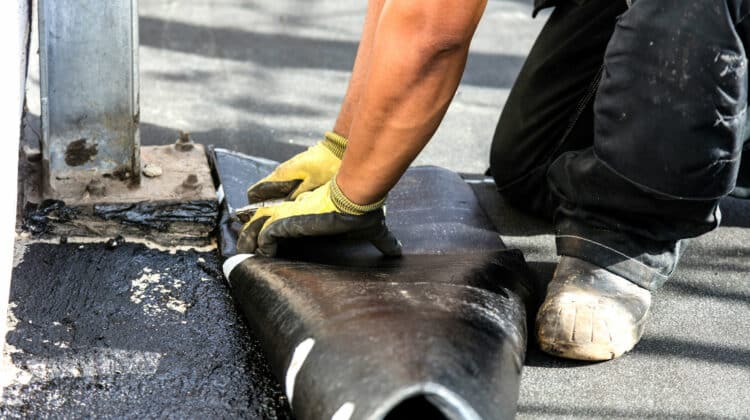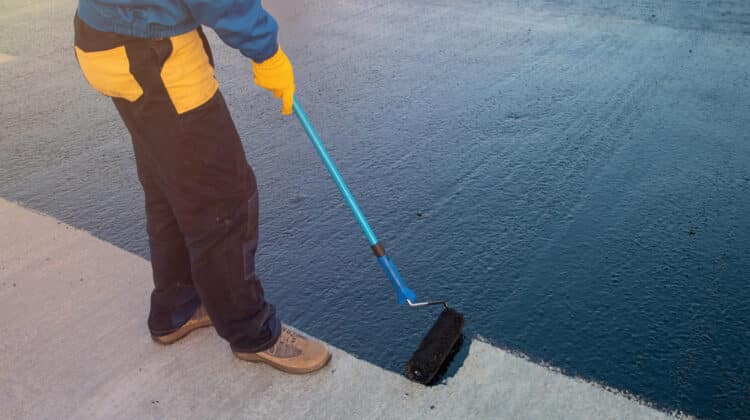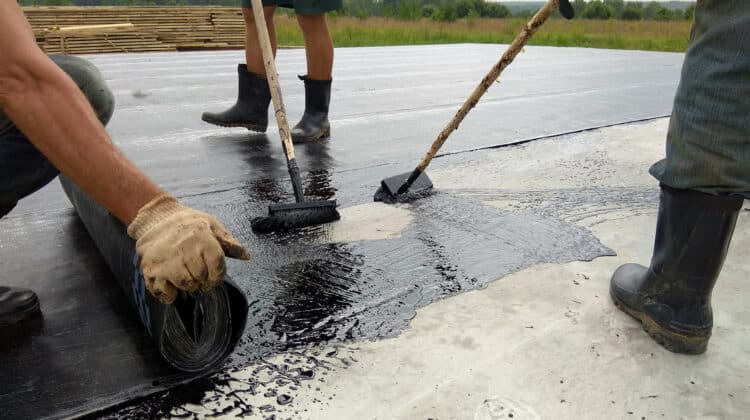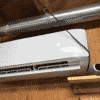Do you want to learn the process of how to remove roofing tar on your roof?
Roofing tar might be a useful roofing material that provides waterproofing protection for your roof, but it is also sticky and messy. It can leave unsightly black stains and cause accidents if left uncleaned.
Upon applying tar on structures like roofs, it can get on other fabrics or objects by accident. If it remains there longer, it will dry and harden up, thus making it more difficult to remove.
If discovered early, there are household chemicals you can use to remove it, and if not, you can contact a professional roofer for its removal.
Table of Contents
What are the steps in removing roofing tar on your roof?
After applying roofing tar for waterproofing your roof, some of it splashed on the metal flashing. You want it immediately removed since it disrupts the visual appeal of your home.
As mentioned, the application and removal of roofing tar is best left to professionals. However, if you are forced into a situation that you have to remove it, here is how:
Materials you need to remove roofing tar
- Lubricant (good quality tar remover product, WD-40, gasoline or mayonnaise)
- Water
- Soap
- three pieces of cloth
- Bucket
Precautionary measures before removing roofing tar
Many lubricants can get rid of tar from metal. Yet your utmost concern should be not to remove the color of the metal if it has one.
Apply a small amount of the product to the metal to check if the color remains, and if it does, you can begin with the tar removal process.
The tar removal product has chemicals that can still damage the metal, so make sure it will not set or dry on it.
Steps in removing tar from metal in your roof
- Apply the tar removing liquid (that you have pre-tested) on the metal
- Let it set and soak into the tar stain for a few minutes, which will make the outer surface loose
- Use a dry cloth to wipe thoroughly the outer surface
- Spread one the product again to the remaining spots to get rid of the tar entirely
- Get a bucket to put in a mixture of strong soap and water
- Use another piece of cloth to wash the area with the soapy water
- Wash the area again with only water/li>
- Use another cloth to wipe the water away
- Let the area dry completely
After following these easy steps, the tar stain will be removed from the metal flashing, and it will look as good as new.
How do you remove roofing tar from aluminum?
If you have an aluminum component on your roof or any aluminum-based material that tar has come into contact with, many products can remove it.
There is a product called Turtle Wax T-520A Bug and Tar Remover, which works wonders in removing tar in any aluminum surfaces, and even your car.
You can also use a mixture of baking soda, a little water, and a couple of drops of vegetable oil, which can remove tar on aluminum surfaces.
How do you remove roofing tar for plastic?
Minerals spirits is an effective way to remove tar from plastic objects, which you can buy in any hardware store.
You can also remove it the old-fashioned way by using a metal scraper with soap and hot water.
How do you remove roofing tar from wood?
As mentioned above, there are many ways you can remove tar in various materials, but wood is the easiest.
You can even use a paint scraper and acetone, but only for small areas.
A scraper and heat blower can also work to remove tar, and even an electric sander can work for large surfaces.
What is the best, all-around tar-removal product available in the market today?
Removing tar can be a pain in the neck, especially hard-to-reach areas like the roof. However, learning about the many ways to remove it is practicable if you are faced with limited options.
This way, you can easily fashion a solution from common household ingredients.
When everything else fails, there is a product that is a miracle cure for removing tar from different materials: WD-40 Multi-Use.
It can remove wet or dry tar on any surface without any difficulty, so if you are looking for a tried and tested product, WD-40 is the one you need.
How do you apply roofing tar on your roof?
Pros and cons of roof tarring
Roof tar application is usually done on houses with flat roofs since they are directly exposed to heat, rain, snow, wind, and hail.
A slanted roof is still exposed to the same type of climate, but does not have the same direct exposure as the flat roofs do.
Pros of roof tarring
- Resistant to ultraviolet sunlight
- Effective in protecting from snow and water
Cons of roof tarring
- It is toxic
- It gives off harmful and acrid fumes
- It can stick to clothes and difficult to remove
After learning about the many ways of tar removal from different materials, it is also essential to learn about the process of tar application, specifically on a roof.
As mentioned, roofing tar is a useful material that provides waterproofing protection for your roof, but it is also difficult to apply.
Handling roofing tar is tricky and necessitates a steady hand to apply it on a roof. Even though some homeowners can tar their roofs, most recommend leaving it to professional roofers since handing is messy, sticky, smelly, and even dangerous.
But if the situation demands that you will be the one to apply tar on your roof, here is how you can do it:
Precautionary measures before applying roofing tar
Before applying tar on your roof, you will need to check it for structural damage, which only a professional can assess. You do not want to fall through a hole and injure yourself.
You also have to choose a good time to apply tar on the roof. Even though the application process would not take long, the drying and curing time does.
You can apply tar at a temperature as low as forty degrees Fahrenheit, but it would not cure and dry until it is at least seventy degrees Fahrenheit.
Also, applying tar in a hot climate can cause it to drip and make a mess.
Applying the tar on the roof
It is crucial to plan before applying the tar on your roof, and this way, you would not be painting yourself into a corner.
When your purchase your roofing tar, make sure it is specifically designed for your kind of home. You will also need the overall dimensions of your roof so that you will know how much tar you will need to cover it.
Professional roofers will usually begin at a corner and the ladder set up at the other end, which is the farthest from the starting point. You can also use two ladders situated at the two ends: one to climb up and one to get down once tarring is finished.
Make sure you are using proper work clothes, including heat-resistant gloves and special roofing shoes.
Use a fiberglass mop to apply it in small strokes, and make sure the bucket is filled with tar close to you. Move back towards the roof’s end where the ladder is positioned.
Do not let the tar bunch up in one area, and after application, place tar paper on top of the hot tar and sink it in the asphalt with the mop. Overlap them with each other to make a seal and make about three layers.
Is learning about how to remove tar really necessary?
Knowing about the process of removing and applying tar is still essential, even though you will end up hiring and professional to do the task, which is the right thing to do.
However, if a situation predicates that you have to remove or apply it on your roof, at least you know the correct procedure and how to do it properly and safely.





